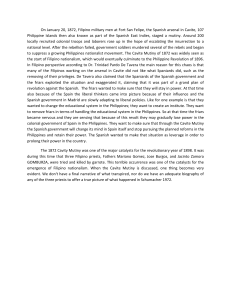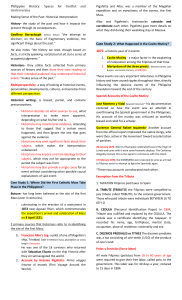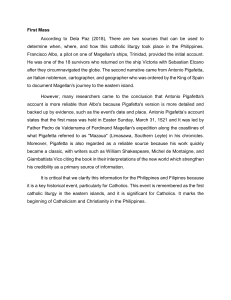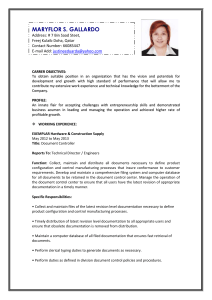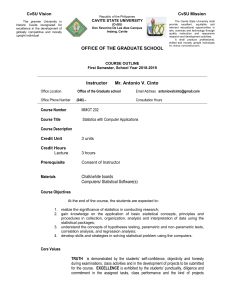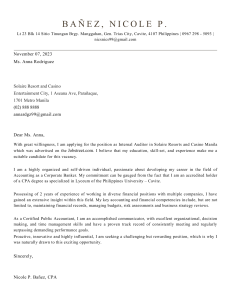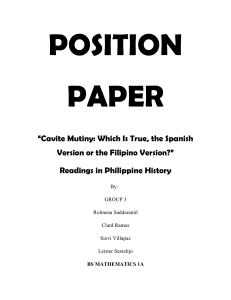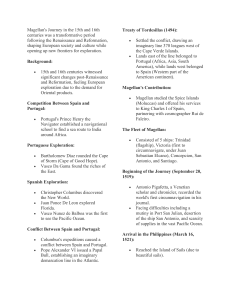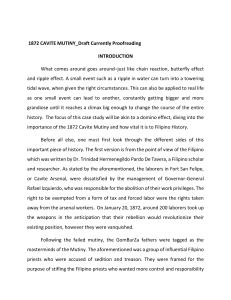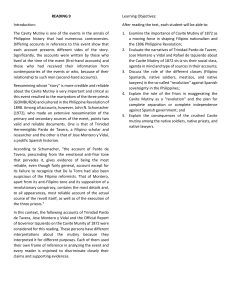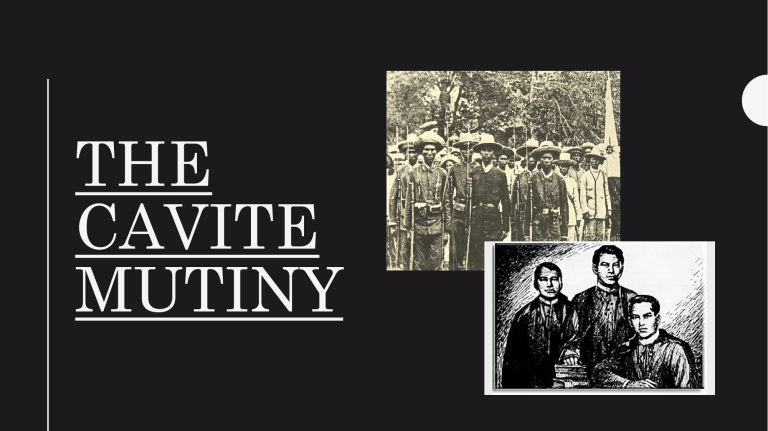
THE CAVITE MUTINY The Cavite Mutiny (1872) • A remarkable event happened during 19th century in the Philippines SPANISH ACCOUNTS ON THE CAVITE MUTINY JOSE MONTERO Y VIDAL A Spanish historian documented the event and highlighted it as an attempt of Indio's to overthrow the Spanish Government in the Philippines Gov. Gen. Rafael Izquierdo Made us of this to implicate the native clergy, which was then active in the call of secularization. • Izquierido and Montero scored out that the main reason of the revolution are the abolition of privileges of the workers in Cavite. • Izquierido reported to the king of Spain that the ‘rebels’ wanted to overthrow the Spanish government to install a new “hari” in the likes of Father Burgos and Zamora. On February 17, 1872 The GOMBURZA were executed to instill fear among the Filipinos so that they may never commit such daring act again. DIFFERING ACCOUNTS OF THE EVENTS OF 1872 Two other primary accounts exist that seem to counter the accounts of Izquierdo and Montero. First, the account of Dr. Trinidad Hermenegildo Pardo de Tavera, a Filipino scholar and researcher, who wrote a Filipino version of the bloody incident in Cavite. Primary Source: Excerpts from Pardo de Tavera’s Account of the Cavite Mutiny This uprising among the soldiers in Cavite was used as a powerful level by the Spanish residents and by the friars. The Central Government in Madrid had announced its intention to deprive the friars in these islands of powers of intervention in matters of civil government and of the directions and management of the university. Up to that time there had been no intention of secession from Spain and the only aspiration of the people was to secure the materials and education advancement of the country According to this account, the incident was merely a mutiny by Filipino soldiers and laborers of the cavite arsenal to the dissatisfaction arising. CRY OF REBELLION Case Study 4: Where Did the Cry of Rebellion Happen? “El Grito de rebellion” • Happened in August 1896, northeast of Manila, where they declared rebellion against the Spanish colonial government. • TEODORO AGONCILLO emphasizes the event when Bonifacio tore the cedula (tax receipt) before the Katipuneros who also did the same. Emilio Aguinaldo commissioned an “Himno de Balintawak” to inspire the renewed struggle after the Pact of the Biak-na-Bato failed. Different Dates and places of the cry: • A guardia civil, Lt. Olegario Diaz, identified the Cry to have happened in Balintawak on 25 August 1896. • Teodoro Kalaw marks the place to be in Kangkong, Balintawak, on the last week of August 1896. • Santiago Alvarez, a Katipunero and son of Mariano Alvarez, leader of the Magdiwang faction in Cavite, put the cry in Bahay Toro in Quezon City on 24 August 1896. • Pio Valenzuela, known Katipunero and privy to many events stated that the Cry happened in Pugad Lawin on 23 August 1986. • Historian Gregorio Zaide identified the Cry to have happened in Balintawak on 26 August 1896. • Milagros Guererro, Emmanuel Encarnacion and Ramon Villegas claimed that the event took place in Tandang Sora’s barn in Gulod, Barangay Banlay, Quezon City, on 24 August 1896.
